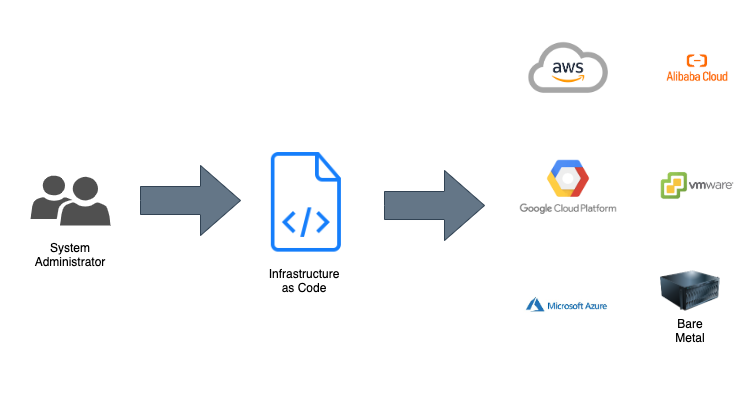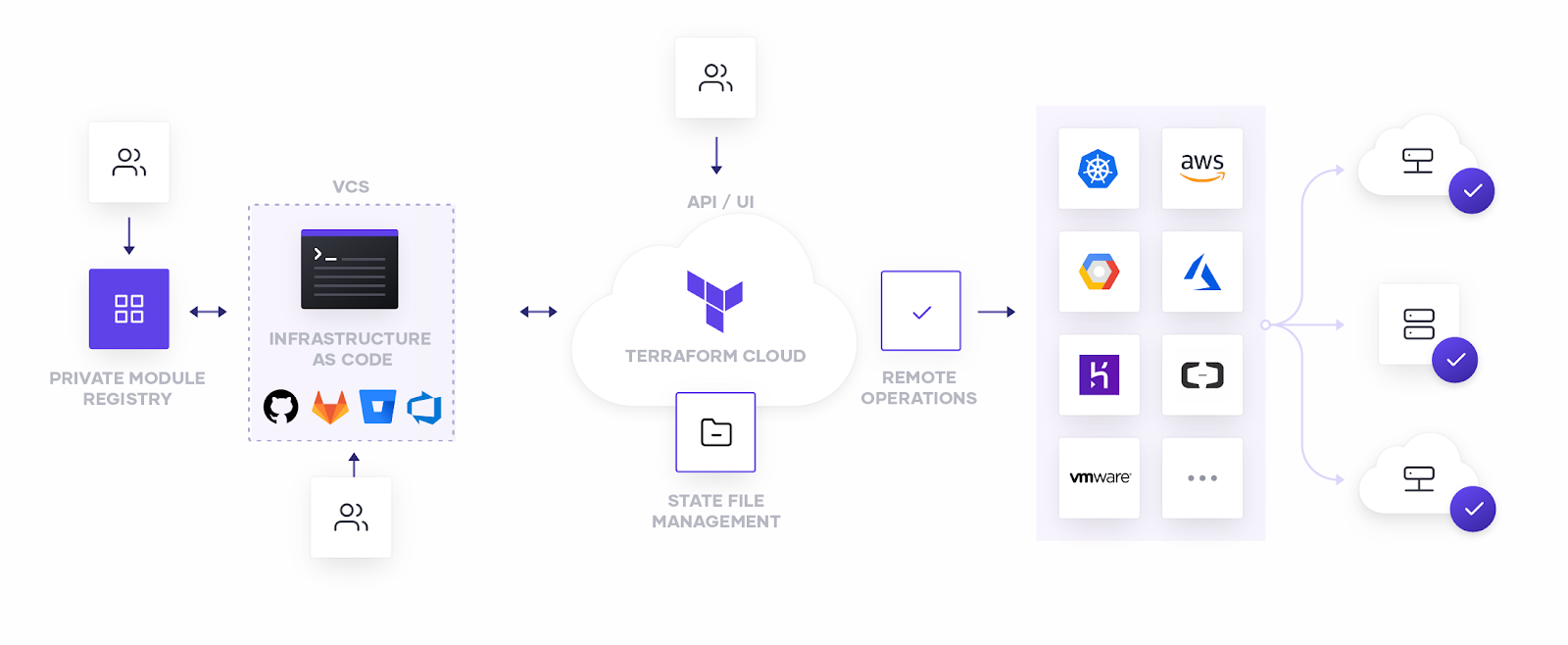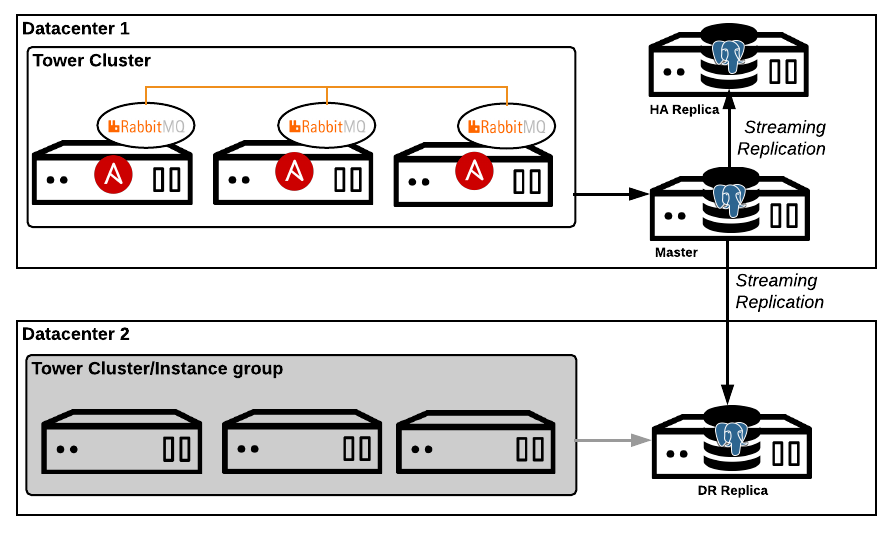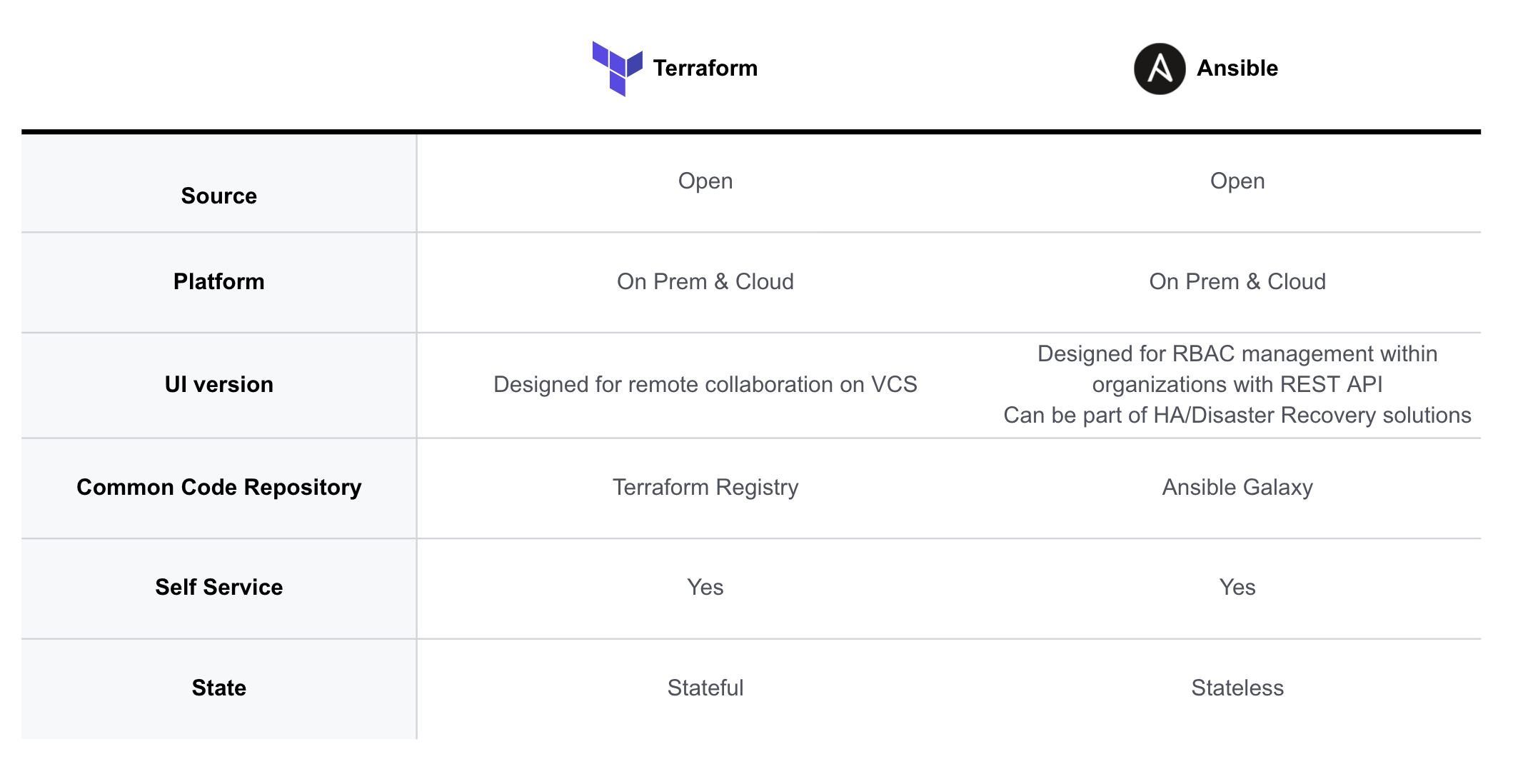Infrastructure as a Code: Terraform or Ansible?
- 9 minsThis post serves as introductory post to Infrastructure as a Code and its benefits. In this post, I will share some high level benefits of using tools like Terraform and Ansible to leverage on the benefits of Infrastructure as a Code. The following content are not meant to be too technical, and are based on my personal experiences after using these two tools.
What is Infrastructure as a Code?

With the advent of technology in the 21st century, more and more organizations are beginning to embrace technology in their environment. This rising trend creates an ever increasing demand for new IT infrastructure, which also created many different options in the market. With so many options, many companies tend to end up adopting multiple cloud setups to run their workloads. Managing all these different setups can be complex and often repetitive, as system administrators had to manually manage and configure the hardware and software that are required to run applications. These tasks usually entail creating virtual machines/instances, installing OS, configuring storage and network, etc.
The way of application development has become more robust as well. Adoption of modern infrastructures such as Kubernetes facilliates the use of Agile methdology as compared to the traditional Waterfall. This means that testing is vigorous in almost all stages of app development and more development environment needs to be created and destroyed on demand for testing purposes. This pushes a futher need for a way to automate the provisioning of these resources.
In recent years, several solutions are available in the market in order to help organizations manage all these infrastructure in a automated and repeated manner. The cricital component of such solutions revolve around using “Infrastructure as a Code (IaC)”. Here is how Wikipedia defines IaC:
“Infrastructure as code is the process of managing and provisioning computer data centers through machine-readable definition files, rather than physical hardware configuration or interactive configuration tools”
The idea of “Infrastructure as a Code” allows the definition of the desired infrastructure setup to be condensed in a code and then be consumed on demand. Defining the infrastructure in a machine readable format is the first step of automation. Once that is done, we can store these code somewhere, and use to automate the provisioning or maintaince of the infrastructure as and when we want. In this way, we can achieve an increased speed in deployment, consistency in infrastructure provisioning, with full tracibility of configurations made. All these benefits in turn help organizations to save time and money.
IaC options
There are currently many options in the market which allows users to reap on the benefits of IaC. Ideally, the tool used should preferrably be platform agnostic, so that the same tool can be used to manage multiple cloud providers. In this post, I will share on mainly the two tools which I have experienced using, which are Terraform and Ansible. Both are Open Source options and you can check their upstream GitHub for more information. Also, you can checkout both HashiCorp and Red Hat official documentation as well.
- Ansible GitHub: https://github.com/ansible/ansible
- Official Ansible documentation: https://docs.ansible.com/
- Terraform GitHub: https://github.com/hashicorp/terraform
- Official Terraform intro: https://www.terraform.io/intro/index.html
Ease of Coding
As a tools which levearage on Infrastructure as a Code, ease of developing these codes is vital for users. In Terraform, the code is written in HCL (HashiCorp Configuration Language), while in Ansible, it is YAML (YAML Ain’t Markup Language). Below are some snippets of the code used to provision a simple instance on AWS.
# example main.tf in Terraform
provider "aws" {
profile = "default"
region = "us-east-1"
}
resource "aws_instance" "example" {
ami = "ami-2757f631"
instance_type = "t2.micro"
}
# example Ansible playbook in Ansible
- ec2:
key_name: mykey
instance_type: t2.micro
image: ami-123456
wait: yes
group: webserver
count: 3
vpc_subnet_id: subnet-29e63245
assign_public_ip: yes
Both codes are human readable and easy for administrators (who may not have coding background) to develop. As long as you have defined the “key words”, which we refer to as provider and resource in Terraform, modules (not to be confused with modulesin Terraform) in Ansible, both Terraform and Ansible will be able to recognize them and perform the intended tasks. The entire list of usable “key words” are documented the official website of both tools.
- Terraform: https://www.terraform.io/docs/configuration/index.html
- Ansible: https://docs.ansible.com/ansible/latest/modules/modules_by_category.html
Readily available resources
From a user’s perspective, the ease of developing these codes will help if there is a library of “templates” or “ready made code” available for reference, or even serve as a self service for users who may not be administrating the infrastructure layer. In Terraform, the piece of code is called module (not to be confused with the Ansible module), while in Ansible, it is refered as playbook. The snippet which I have shared earlier can be considered as a module or playbook respectively.
Both tools do boast the availability of a library(repository) of codes available for users to use.
For Terraform, modules for common use cases (most of it are for cloud providers) are stored in Terraform Registry. There are some commnuity ones as well. These modules are verified and are official, supported by HashiCorp.
For Ansible, the playbooks repository can be retrieved from Ansible Galaxy. The playbooks here are contributed mainly by the community. Some vendors do provide their own supported Ansible playbooks for initial provisioning.
Stateful vs Stateless
Terraform in this case is stateful, as it keeps track of the changes applied before and after in the working directory in the form of a terraform.tfstate file. This helps users to visualize potential changes prior to running the module, often with terraform plan command, and reverting back to previous state if required - terraform destroy.
Ansible on the other hand is stateless, meaning to say, it does not know the current state of your infrastructure. Whenever the playbook runs, it does the check, and changes it to the desired state if required. However, Ansible does have the ansible-playbook --check command for users to perform a dry run before executing the actual playbook.
UI version
Both Terraform and Ansible comes with the UI version, in the form of Terraform Enterprise and Ansible Tower. Both offers REST API endpoint, which allows users to interact and perform operations via API calls.

Terraform Enterprise builds primarily on Terraform Cloud, which offers remote execution and state management (imagine the terraform.tfstate file is no longer required, as it is taken care on Terraform Cloud), which faciliates a collaboration of module developement via Version Control System (VCS), like Github. The purpose is to ensure that Terraform runs in a consistent and reliable environment, and the only source of truth will be whatever that is on the VCS repository.

Ansible Tower is meant for better organization control with RBAC features. In addition, it also supports clustering, and HA failover. This allows users to deploy multiple Ansible Tower instances across environment, and recover from disasters in case of a failure.
There are many other features with regards to the enterprise versions of both tools which I did not include, but both versions are definitely targeted at different use cases, so I shall not do a apple vs orange comparison here, except highlighting some features of each tool.
You can refer to the the official documentation for further features of both tools:
- Terraform Cloud: https://www.terraform.io/docs/cloud/index.html
- Ansible Tower: https://docs.ansible.com/ansible/latest/reference_appendices/tower.html
- Ansible Tower HA and Disaster Recovery blog: https://servicesblog.redhat.com/2019/04/08/ansible-tower-high-availability-and-disaster-recovery/
Summary and Conclusion
Overall, I do feel that both tools are good tools to use. They are relatively easy to install as both YAML and HCL are considered codes which are easy to pick up. Both tools are agentless as well. In my opinion, Terraform is a better tool to create infrastructure from scratch, especially on cloud providers, given the readily available modules, which are on the official supported Terraform Modules Registry. Ansible will be more suited for configuration for post infrastructure provisioning, as the basis of its operations lies in the inventory, which defines the target machines to run the playbooks on. This design implicitly implies that the machines/instances have to be available beforehand (although we can also execute on localhost or bastion host first, at pre provisioning phase, which works as well - my argument is that the tool was designed to run with an inventory).
While Terraform keeps track of the state with terraform.tfstate, it allows user to easily know what is the current state, and easily undo it with terraform destroy. This comes as a double edge sword as well. This also means that the terraform.tfstate file has to be managed by the users. You will not have that problem with Ansible, as Ansible only goes one way - to reach the desired state defined in the playbook, but the only way to undo changes is the change the playbook
The UI versions for both tools have more enterprise features for each of them but they are meant for different use cases, so it is up to the users to decide which is more applicable for them.

The above table shows a summary of what I have discussed. There are definitely more in depth features of each product that I did not cover in this post, but both are definitely great tools to use for organizations to leverage on Infrastructure as a Code.